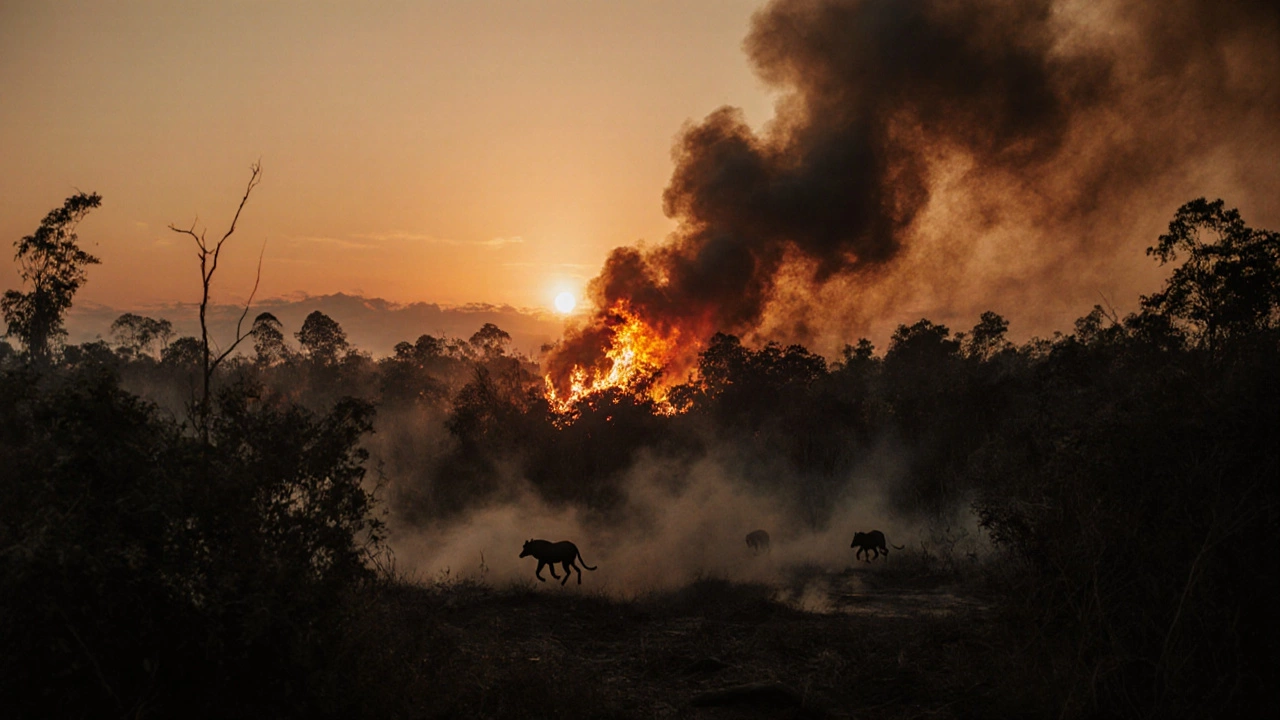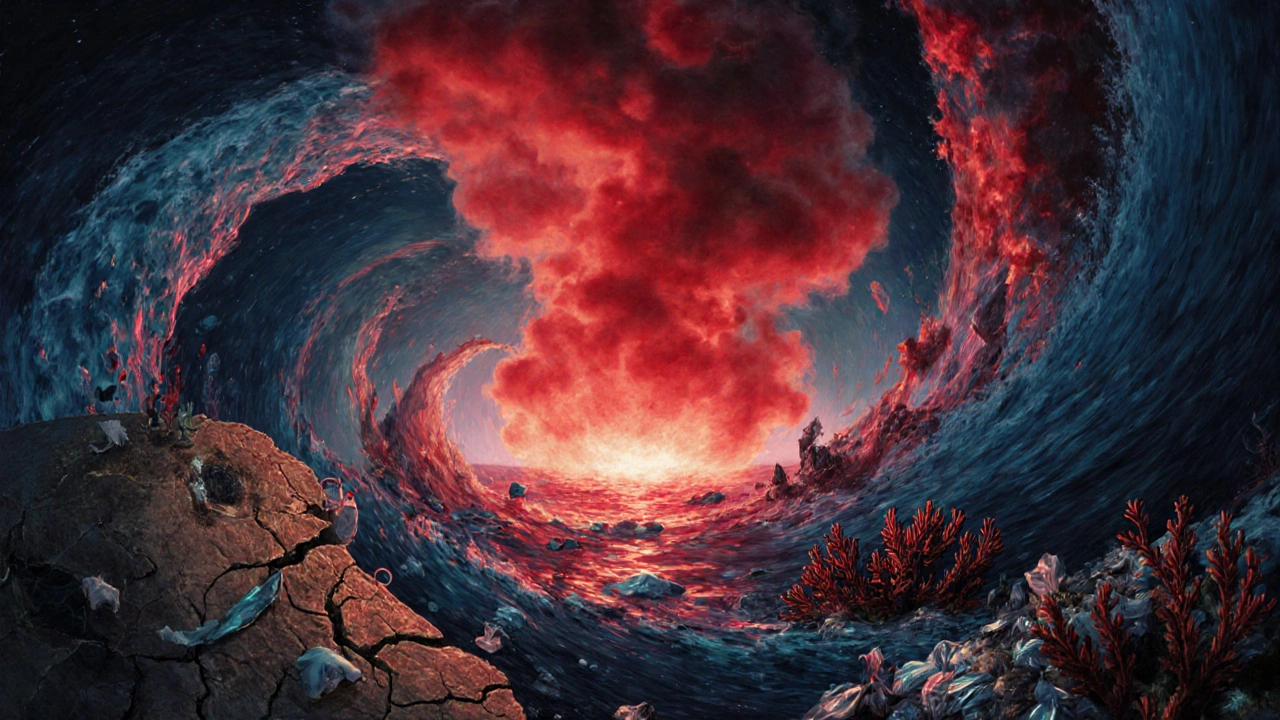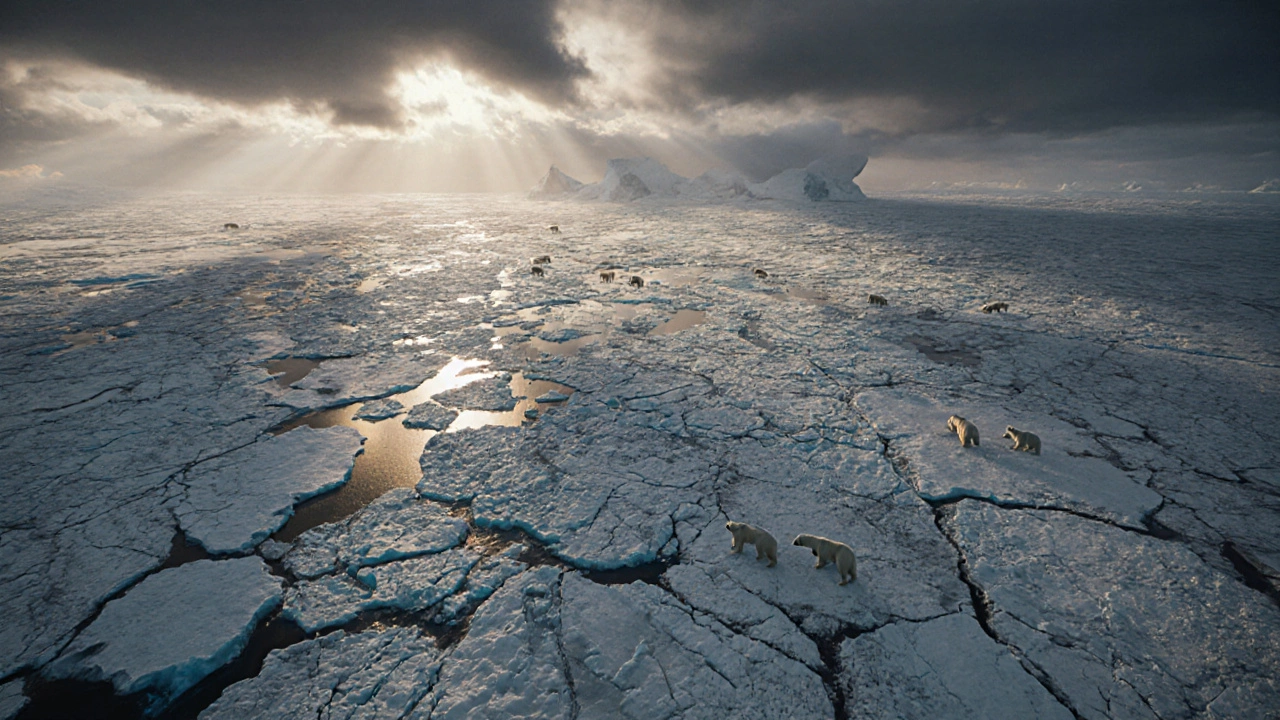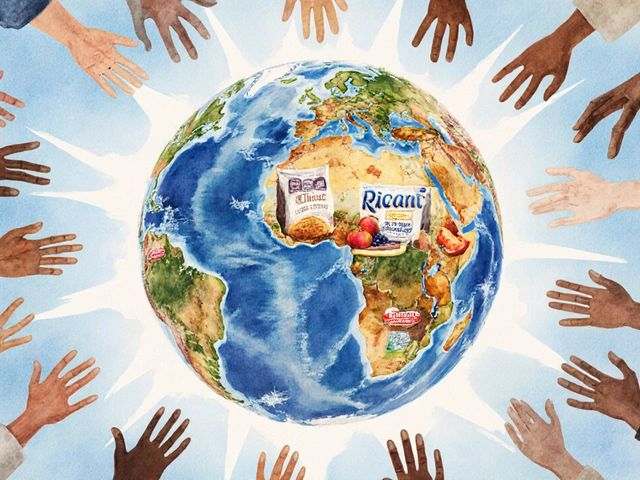Personal Carbon Footprint Calculator
Your Carbon Footprint Analysis
This tool calculates your annual carbon emissions in metric tons of CO₂. The global average is 4.7 tons per person. To limit warming to 1.5°C, we need to stay below 2.3 tons per person by 2030.
Actions to Reduce Your Impact
Every 1,000 lbs of CO₂ reduced helps prevent rising sea levels and extreme weather events.
Switch to renewable energy
Reduces emissions by 1-2 tons annually
Reduce air travel
One round-trip flight to Europe = 1.5 tons CO₂
Eat less meat
Reduce red meat by 50% = 0.5 tons annually
Drive less, carpool or use public transport
Saves 1 ton of CO₂ per year for average driver
Support clean energy policies
Helps create systemic change beyond individual actions
There’s a simple reason you keep seeing headlines about melting ice, wildfires, and dying coral reefs: climate change isn’t just one environmental issue among many-it’s the engine driving them all. It’s the reason oceans are acidifying, forests are burning, and species are vanishing faster than at any time in the last 66 million years. While plastic pollution gets attention, and deforestation makes headlines, these are symptoms. Climate change is the root cause.
Why climate change is the #1 problem
It doesn’t just raise temperatures. It rewires the entire planet’s systems. The last decade was the hottest in 125,000 years. Arctic sea ice is now at its lowest level in at least 1,000 years. In 2023, global CO₂ levels hit 420 parts per million-up from 280 before the Industrial Revolution. That’s not a small jump. That’s a siren.
When the atmosphere traps more heat, everything else breaks. Rain patterns shift. Droughts last longer. Floods come faster. The 2024 floods in Pakistan drowned a third of the country. The same year, heatwaves killed over 1,000 people in India. These aren’t distant disasters. They’re the new normal.
And it’s not just weather. Climate change is killing ecosystems. Coral reefs, which support 25% of all marine life, have lost half their coverage since the 1980s. Scientists now say 70-90% of reefs will vanish if global temperatures rise just 1.5°C above pre-industrial levels. We’re already at 1.2°C-and we’re not slowing down.
How it connects to everything else
People often point to plastic in the ocean as the biggest problem. And yes, eight million tons of plastic enter the seas every year. But here’s the catch: warmer waters make plastic break down faster into microplastics, which are then absorbed by fish, plankton, and even the deepest-sea creatures. Climate change doesn’t just make pollution worse-it spreads it.
Deforestation? That’s not just about losing trees. It’s about releasing stored carbon. The Amazon, once a carbon sink, is now a net emitter of CO₂ because of fires and logging. And when forests burn, they don’t just release carbon-they destroy habitats that species rely on to survive. Climate change turns a habitat loss problem into an extinction crisis.
Even air pollution, which kills seven million people a year, ties back. Burning fossil fuels for energy releases both CO₂ and toxic particles. The same power plant that warms the planet also gives children asthma. The same car that contributes to warming also fills city air with cancer-causing chemicals.
What’s often overlooked: the feedback loops
Climate change doesn’t just happen-it accelerates itself. Take permafrost. It’s frozen soil in the Arctic that holds twice as much carbon as is currently in the atmosphere. As temperatures rise, it thaws. And when it thaws, microbes break down the ancient organic matter and release methane-a greenhouse gas 80 times more powerful than CO₂ over 20 years.
That’s a feedback loop: warming → thawing → methane release → more warming → more thawing. And it’s already happening. In 2023, Siberian permafrost released 100 million tons of methane-equivalent to the annual emissions of 20 million cars.
Another one: wildfires. More heat and drought mean bigger fires. Bigger fires mean more smoke, which darkens ice and snow. Darker surfaces absorb more sunlight, which melts ice faster, which raises sea levels, which floods coastal cities. It’s not a chain-it’s a spiral.

Why other problems, while serious, aren’t #1
Plastic pollution? It’s horrific. Marine animals choke on bags. Microplastics are in our blood. But plastic doesn’t cause global heating. It doesn’t trigger mass extinctions on its own. It’s a symptom of a throwaway culture-and that culture is fueled by fossil-fuel-based production, which is tied to climate change.
Water scarcity? Yes, 2.3 billion people lack safe drinking water. But that’s not because we’re running out of water. It’s because climate change is messing up rainfall patterns, drying up rivers, and making droughts worse. Fix the climate, and you fix water access.
Biodiversity loss? Over a million species are at risk of extinction. But the leading cause isn’t hunting or habitat fragmentation alone. It’s climate change forcing animals to move faster than they can adapt. Polar bears can’t walk to new ice. Birds arrive at breeding grounds too late because spring came early. Climate change is the ultimate disruptor.
What’s being done-and what’s not
Many environmental groups focus on recycling, tree planting, or banning single-use plastics. These are good. They help. But they’re like putting bandages on a broken leg while ignoring the fracture. You need to fix the bone.
The real solution? Rapidly phasing out fossil fuels. Transitioning to renewable energy. Stopping new oil and gas projects. Protecting and restoring forests and wetlands that store carbon. Electrifying transport. Making buildings energy efficient. These aren’t idealistic goals-they’re technical, economic, and political challenges we already have the tools to solve.
In 2024, solar and wind power generated more electricity than coal in the U.S. for the first time. Electric vehicle sales hit 14 million globally. Countries like Denmark and Costa Rica now run on over 70% renewable energy. The technology exists. What’s missing is the political will.

What you can do
You don’t need to live off-grid to make a difference. But you do need to think beyond recycling bins.
- Switch to a green energy provider if your utility offers one.
- Call your local representative and demand a ban on new fossil fuel infrastructure.
- Support organizations that litigate against oil companies or push for climate policy-not just those that plant trees.
- Reduce air travel. If you must fly, choose direct routes and offset emissions through verified programs.
- Vote. Not just in national elections, but in local ones. City councils decide zoning, public transit, and building codes. They have more power than you think.
Change won’t come from individual choices alone. But individual pressure-when multiplied-changes policy. And policy changes the system.
The bottom line
There’s no planet B. No backup Earth. No tech fix waiting in the wings. The only way to stop the collapse of natural systems is to stop heating the atmosphere. Everything else-pollution, extinction, water shortages-is a ripple from that single, accelerating force.
Climate change is the #1 environmental problem because it’s the only one that can erase all the others. Fix that, and you fix the rest. Ignore it, and nothing else matters.
Is plastic pollution worse than climate change?
No. Plastic pollution is a serious threat to oceans and wildlife, but it doesn’t drive global heating, mass extinctions, or extreme weather like climate change does. Plastic is a symptom of a fossil-fuel-based economy. Solving climate change reduces plastic production at its source.
Can planting trees solve climate change?
Tree planting helps, but it’s not a silver bullet. Forests absorb carbon, but they take decades to grow and can burn or die in heatwaves. Protecting existing forests is more effective than planting new ones. The real solution is cutting fossil fuel emissions-trees are a supplement, not a replacement.
Why isn’t climate change being fixed faster?
Because fossil fuel companies still make trillions in profits, and governments have been slow to regulate them. Political inertia, lobbying, and misinformation have delayed action for decades. But public pressure is growing. In 2024, over 300 climate lawsuits were filed against governments and corporations worldwide.
Is it too late to fix climate change?
No-but we’re running out of time. We can still avoid the worst outcomes if global emissions peak by 2025 and drop to net zero by 2050. That’s hard, but possible. The science says we have a narrow window. It’s not about perfection-it’s about progress. Every fraction of a degree matters.
How do I know if a climate organization is credible?
Look for groups that focus on systemic change: policy advocacy, legal action, or phasing out fossil fuels. Avoid those that only sell carbon offsets or sell branded reusable bottles. Credible organizations publish clear goals, measurable results, and funding sources. Check if they’re endorsed by the Intergovernmental Panel on Climate Change (IPCC) or major scientific bodies.





